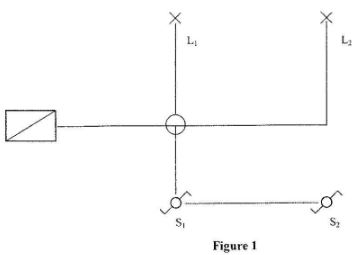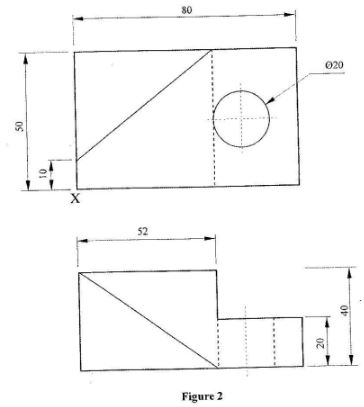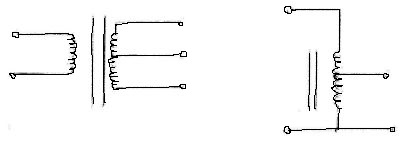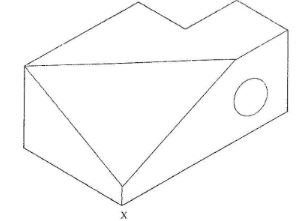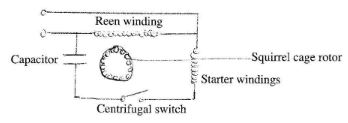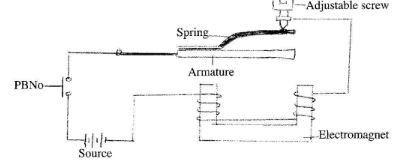ELECTRICITY
Electricity Paper 1 (448/1)
SECTION A (52 marks)
-
- State three safety precautions to prevent accidents from overhead power lines.(3 marks)
- Name four areas of specialization in electrical engineering at diploma level.(2 marks)
-
- List four layout tools used in metal fabrication.(2 marks)
- Describe three characteristics of magnetic lines of force.(3 marks)
-
- Name two types of inductor cores.(1 mark)
- State two reasons why silver is not used to manufacture electrical conductors.(2 marks)
-
- Determine the resistance of each of the following carbon resistors if their colour code are:
- Blue Orange Brown Silver
- Grey Red Yellow
- Green White Black Gold(3 marks)
- State two factors that determine the inductance of a coil.(2 mark)
- Determine the resistance of each of the following carbon resistors if their colour code are:
-
- State two ways of identifying the polarity of an electrolytic capacitor.(2 marks)
- An electric shaver supplied from a 12V source takes a current of 800mA. Calculate:
- its power rating;
- its equivalent circuit resistance.(3 marks)
-
- With the aid of circuit diagrams distinguish between a centre-tapped isolation transformer and an autotransformer.(3 marks)
- Explain how eddy currents are minimized in a transformer.(2 marks)
-
- List four equipment that belong to the supply authority at the consumer's intake point.(2 marks)
- State three reasons why protective switchgear is installed in a domestic installation.(3 marks)
-
- State three functions of light emitting diodes.(3 marks)
- Distinguish between a rectifier diode and a zener diode.(2 marks)
-
- Name two types of electrical indicating instruments and for each state one method of damping.(3 marks)
- List three visual inspections carried out when trouble shooting a faulty circuit in a printed circuit board.(3 marks)
-
- Name the materials used to make the parts of each of the cells shown in the following table:
CELL POSITIVE
ELECTRODENEGATIVE
ELECTRONELECTROLYTE Lead Acid Leclanche - Figure 1 shows a layout of an electrical installation in which lamps L, and L, are controlled by switches S, and S, Draw the wiring diagram of the circuit.(5 marks)
- Name the materials used to make the parts of each of the cells shown in the following table:
SECTION B (48 marks)
Answer any four questions from this section.
- Figure 2 shows two views of a block drawn in first angle projection. On the grid paper provided, draw an isometric view of the block taking point X as the lowest point. (12 marks)
- Figure 3 shows an R-L circuit.
Calculate:- circuit impedance:
- circuit current;
- voltage drop across the inductor,
- apparent voltage:
- true power:
- power factor
(12 marks)
-
- Name two types of controlling devices used in measuring instruments.(2 marks)
- State three advantages of permanent magnet moving coil instrument over moving iron instrument.(3 marks)
- A meter movement has resistance of a 292 full scale deflection current of 200mA.
- Calculate the value of the resistor to enable it to measure:
- voltage upto 10 volts
- current upto 10 amperes
- Draw the circuit diagram in each case.(7 marks)
- Calculate the value of the resistor to enable it to measure:
-
- Draw a labelled circuit diagram of a capacitor-start induction motor
- With the aid of a labelled circuit diagram, explain the operation of a buzzer.(9 marks)
- Figure 4 shows a resistive circuit.
Calculate:- the total resistance of the circuit.
- the voltage drop across R.(12 marks)
MARKING SCHEME
-
- Safety precautions
- Do not climb electric power posts
- Avoid touching any broken overhead cable
- Do not climb trees near overhead cables
- Avoid felling trees near overhead power lines
- Never erect building below power lines.
(Any 3 x 1)
- Areas of specialisation
- Electrical (power option)
- Electronics
- Telecommunication
- Instrumentation
(4 x 1/2)
- Safety precautions
-
- Tools
- Hacksaw
- Scriber
- Steel rule
- Try square
- Tape measure
- Chisel - Dot punch
(Any 4 x 1/2)
- Magnetic lines of force
- Each line forms a closed loop
- Lines never intersect
- Stretched elastic cords always trying to shorten themselves
- Direction of line is that of north-seeking pole
(Any 3 x 1)
- Tools
-
- Inductor cores
- Air core
- Ferrite core
- Iron core
(Any 2 x 1/2)
- Silver
- is very expensive/ rare
- not mechanically strong
(2 x 1)
- Inductor cores
-
- Resistance
- 630 Ω ± 10%
- 820 kΩ ± 20%
- 59Ω ± 5%
- Inductance of a coil
- Number of turns in a coil
- Length of the coil
- Cross-section area of the coil
- Relative permeability of the core
(Any 2 x 1 = 2 marks)
- Resistance
-
- Determining polarity
- The terminal at the crimped end of capacitor is the positive.
- The negative terminal is identified by a broad strip marked (-) on the body and vice versa.
- The shorter terminal of an unused capacitor is the negative and vice versa.
- The positive terminal is identified by a red spot.
(Any 2 x 1)
-
- Power rating
=I x V
= 12 x 0.8 A = 9.6 W
(1 1/2 marks)
=P= V2
R
=R = V2
P
=122 = 15Ω
9.6
(1 1/2 marks)
- Power rating
- Determining polarity
-
- Transformers
- Eddy currents
Minimized by -- Laminations
- Insulating material,(2 x 1)
- Transformers
-
- Equipment
- Meter
- Main fuse
- Sealing chamber
- Armoured cable
- Ripple timer
(Any 4 x 1/2)
- Protection gear
- Protects circuit against excess current
- Protects circuit against earth leakage
- Enables isolation of the installation from the supply.
(3 x 1)
- Equipment
-
- Uses of LED
- indicators in instrument panels.
- numerical displays
- lighting
- photocopying
- Diodes
- Rectifier diode operates in forward bias.
- Zener diode operates in the reverse bias.
- Uses of LED
-
Indicating instruments Method of damping Permanent magnet moving soil Eddy current Moving iron Air Thermocouple Eddy current Electrostatic Air (Any 2 x 1) (2 x 1/2) = 1 - Visual inspections
Check for:- Broken conductor tracks
- Metal lying across conductor tracks
- Components showing sign of damage - colour
- Dry joints
-
- Materials
Lead Acid Leclanche + electrode lead dioxide Carbon - electrode lead Zinc Electrolyte dilute sulphuric acid Potassium hydroxide
(6 x 1/2 = 3)
- Wiring diagram
- Correct cable routing
Correct circuit
Correct symbols
- Correct cable routing
- Materials
-
-
-
- Z= √x2L +R2 = √250,000 + 1,000,000
= 1118 Ω
- Z= √x2L +R2 = √250,000 + 1,000,000
- Circuit current IT = Vs/Z
125/1118
= 0.1118 A - Voltage drop across:
Inductor = IT XL = 0.1118 x 500 = 55.9 V - Apparent power = Vs x IT
= 125 x 0.1118
= 13,975 VA - True power dissipated by resistor
PT =, (LT)2R = (0.1118)2 x 1000 = 0.0125 x 1000
= 12.5 W - Power factor
PF= PT/PA =12.5W/13.975VA = 0.89
(2 x 6 = 12 marks)
-
-
- Controlling devices
- Spring control
- Gravity control
(2 x 1)
- Advantages
- High sensitivity
- Uniform scale
- Well shielded from stray magnetic field
(3 x 1)
-
- Potential drop = 2 x 200 = 0.4V
Voltage drop across R = 10 -0.4 = 9.6 V
hence R = 9.6/0.2 = 48Ω
(4 x 1) - Low resistance shunt S is connected across the milliameter shunt carries the rest of the current i.e 10 -0.2 = 9.8A
∴=0.2 x 2=Sx 9.8 = 0.04 Ω
(3 x 1)
- Potential drop = 2 x 200 = 0.4V
- Controlling devices
-
- Capacitor - start induction motor
Sketch = 1
Labelling (4 x 1/2) = 2
3 marks -
- When push button is closed, the circuit is completed.
- Current flows through the coils which become an electromagnet , and attract the armature.
- The armature pulls the spring and disconnects the contact points, breaking the circuit and demagnetizing the coils.
- The armature - spring assembly completes the circuit again and the process is repeated again, creating the buzzing sound at the contacts for as long as the push button remains pressed.
- Capacitor - start induction motor
-
-
- 50 + (50 + 100) 100
(50 + 100) + 100
= 50 + 15000/250
=50 + 60Ω = 110Ω - P.d across R4
IT= E/RT
= 22/110 = 0.2A
IT=I2+ I4 where I2 is current through R2 and I4 is current through R3 and R4
I4 = IT - I2
P.d across R2 = 22 - ITR1
= 22 -(0.2 x 50) = 22 - 10 = 12 V
=12V
I2 = 12V/100Ω =0.12A
I4= IT - I2 = 0.2 - 0.12 = 0.08 A
P.d across R4=I4R4 = 0.08 x 100
= 8V
- 50 + (50 + 100) 100
-
Download KCSE 2011 Electricity Paper 1 Questions with Marking Scheme.
Tap Here to Download for 50/-
Get on WhatsApp for 50/-
Why download?
- ✔ To read offline at any time.
- ✔ To Print at your convenience
- ✔ Share Easily with Friends / Students

